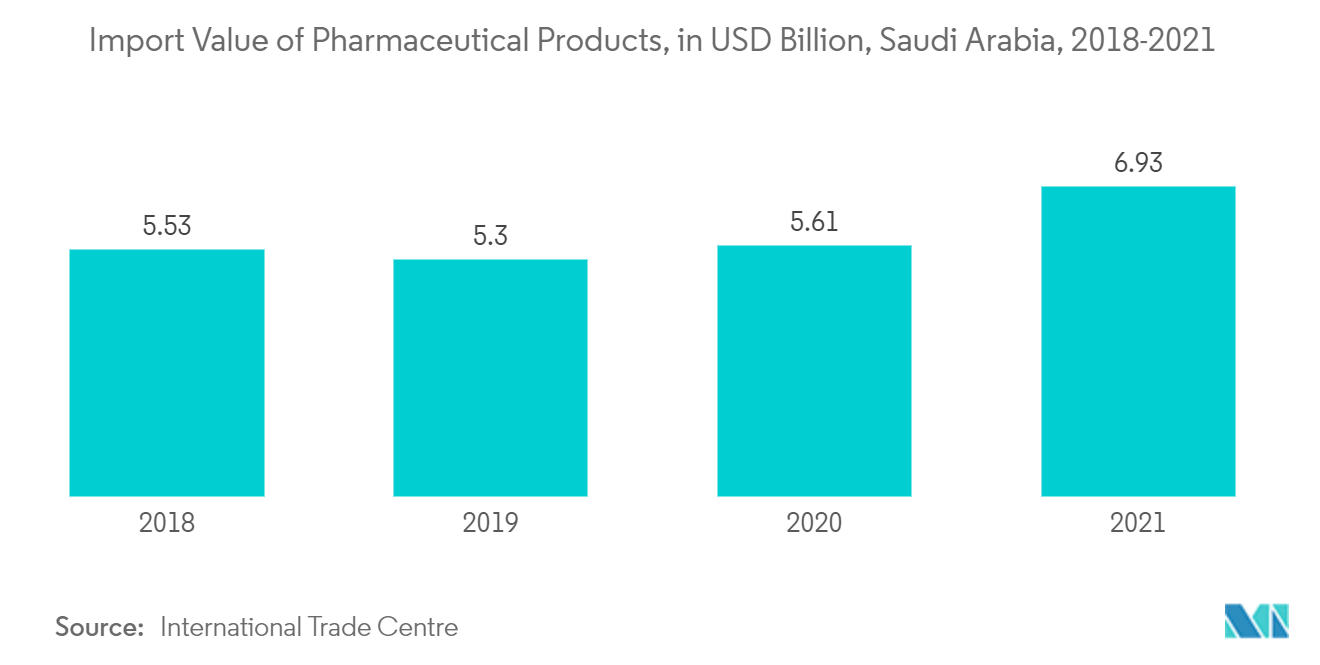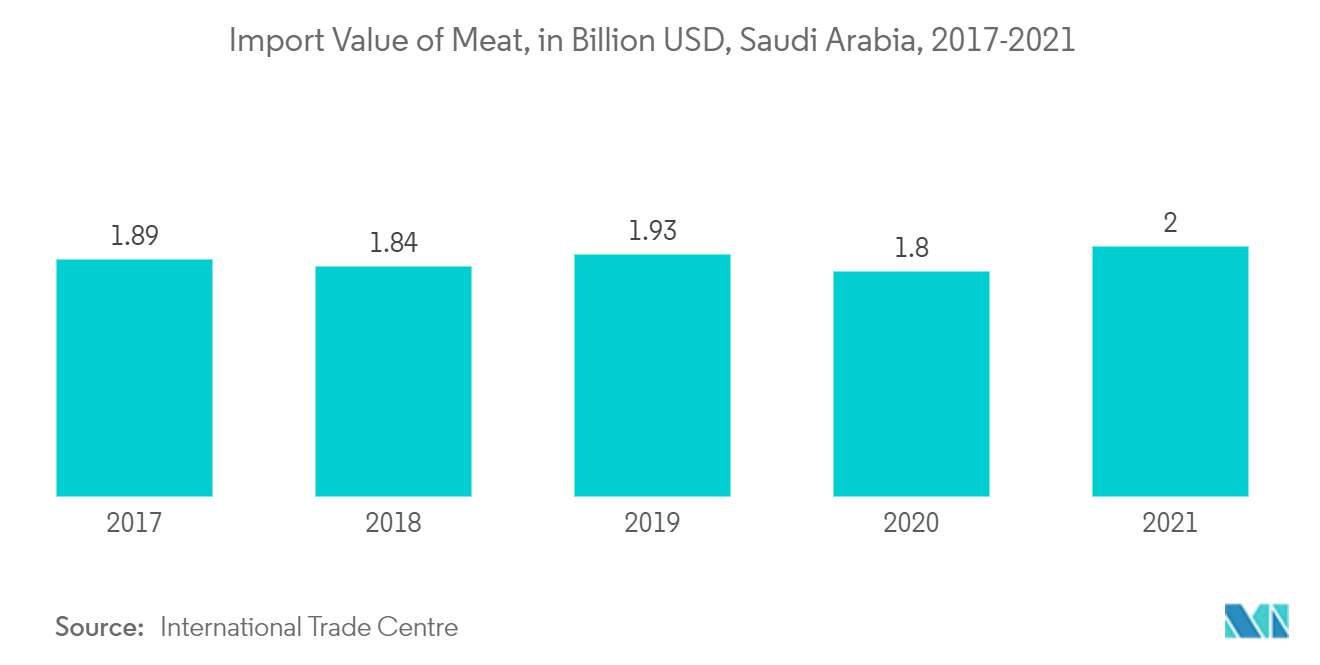Market Trends of Saudi Arabia Chain Logistics Industry
This section covers the major market trends shaping the Saudi Arabia Chain Logistics Market according to our research experts:
Growth of Pharmaceuticals Supporting Cold Chain Logistics
The Saudi Arabian pharma market is considered one of the fastest-growing markets today, with strong export potential to serve the MENA and OIC (Organization of Islamic Countries) region with a total market of USD 120 billion. The demand for pharmaceuticals in Saudi Arabia is expected to grow substantially due to the increasing penetration of health insurance companies and the rising incidence rate of non-communicable diseases.
Furthermore, the exceptional rise in the per capita income of Saudi Arabia is also expected to foster the demand for branded pharmaceutical drugs. Another key factor driving the growth of the pharmaceutical market in Saudi Arabia is the country's strategic move to allow 100% FDI in the pharmaceutical sector.
Saudi Arabia's pharmaceutical market stood at USD 10,849.4 million in 2021. Saudi Arabia has more than 40 registered pharmaceutical factories, covering 36% of the local market's need for medicines. The Kingdom's pharmaceutical sector made an export worth USD 402.59 Million in 2021.
Rapid reforms in the healthcare sector in Saudi Arabia by the government and multinational companies are expected to propel the growth of the Saudi Arabian pharmaceutical drugs market. Currently, Saudi Arabia imports all its biological molecules, making it 100% dependent on outside products. To address this, the National Transformation Plan aims to localize 40% of the pharmaceutical sector and reduce its import dependency.

Growth of Imported Meats Demanding Cold Storage
Saudi Arabia is the largest importer of food and agricultural products among the Gulf Cooperation Council (GCC) countries, with a population more than double that of the five GCC states (the United Arab Emirates, Kuwait, Qatar, Oman, and Bahrain) together. The Saudi Arabian poultry sector has experienced major production growth over recent years.
Saudi Arabia is Brazil's second most important export market for chicken meat across the world. Notably, Brazil accounted for most poultry products in the country, capturing a share of more than 70% of the total imports, followed by France, Ukraine, and the United Arab Emirates.
The Kingdom of Saudi Arabia has a high demand for poultry meat and has been dependent on imports from other countries to satiate its demand. Thus, the country has been indulging in several trade deals with major meat-producing countries over the years. The Complete export data for major exporting countries for Jan-May 2021 shows that Saudi Arabia imported 304,564 MT of chicken meat, an increase of about 34 percent over the same period last year.
Saudi Arabia is the largest consumer of red meat among the GCC countries, with meat majorly imported from Australia, the United States, Brazil, and other countries. Saudi Arabia's per capita meat consumption is the highest in the world and amounted to nearly 50 kg. The growth in red meat consumption, production, and import of live animals for their auspicious occasion, i.e., Eid al Adha feast, utilization of Hajj meat that Islamic Development Bank manages, rise in import of red meat, and government support are some of the major factors driving cold chain logistics in Saudi Arabia as these products have a low shelf life.

